Mit der Horrorkomödie Attack of the Lederhosenzombies und dem Psychothriller Mein Fleisch und Blut dringen Dominik Hartl und Michael Ramsauer in Filmisches Genre-Neuland in Österreich vor. Über die Gesellschaftskritik von Zombie-Filmen, die herausfordernde Arbeit an einem Thriller-Drehbuch und vieles mehr erzählen die beiden Autorenfilmer der Filmakademie Wien im Gespräch.
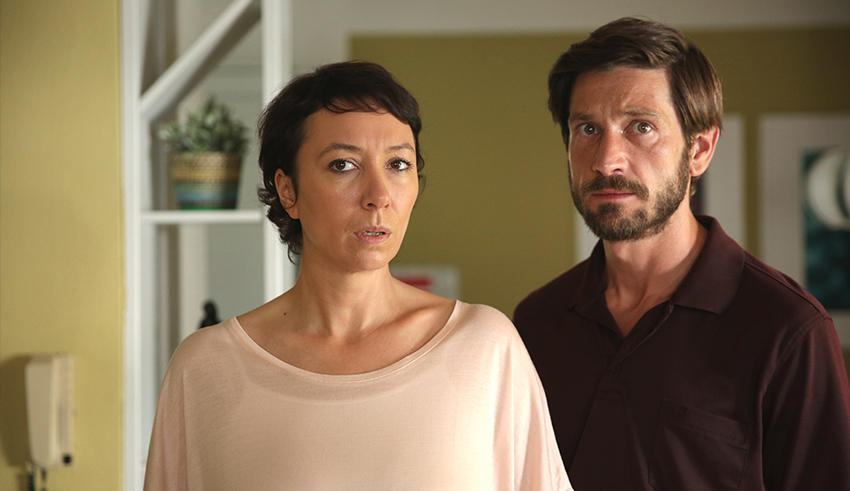
Genre Psychothriller (Mein Fleisch und Blut), Genre Horrorkomödie (Attack of the Lederhosenzombies) − was ist das Faszinierende, was ist das Herausfordernde?
Michael Ramsauer (MR): Das Faszinierende am Psychothriller ist, die Mechanismen herauszufinden, wie man eine Geschichte so erzählt, dass sie spannend ist. Es ist auch das Herausfordernde daran, Informationen zu verteilen, die neu sind, aber nicht so viel zu erzählen, dass das Publikum schon zu viel weiß. Faszinierend und schwierig zugleich ist es auch, dass es schon viele Filme im Thrillergenre und im Bereich der Genrefilme generell gibt. Man hat immer das Gefühl, als sei alles schon einmal da gewesen, aber es ist sehr reizvoll, etwas Neues zu addieren.
Dominik Hartl (DH): Das Drehen von Horrorfilmen und Komödien macht einfach Spaß. Herausfordernder war sicher die Komödie, die generell sehr schwierig zu schreiben und auch zu schneiden ist. Was mich am Genre noch fasziniert − es gibt keine Ausrede. Du machst den Film, eine Komödie, einen Horrorfilm, einen Psychothriller und das Publikum lacht oder fürchtet sich − es gibt keine Ausrede. Die Reaktion der Menschen erfolgt unmittelbar, das ist sehr schön und der ganze Diskurs darüber ist dann meiner Meinung nach auch weniger verlogen.
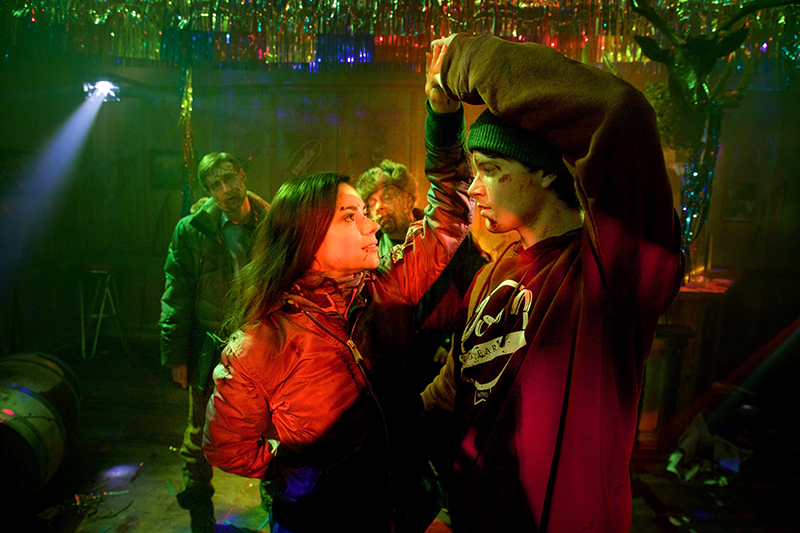
MR: Das birgt auch ein größeres Risiko, denn im Genre musst du einfach bestehen. Bei einem Arthouse-Film kann man danach eventuell sagen: „Das war halt so gedacht.“ Aber beim Genre gibt es das nicht. Es war gedacht, dass das spannend ist und wenn es nicht spannend ist, dann hast du verloren.
DH: Ich finde es auch sehr interessant, dass wir in Österreich eigentlich etwas Neues tun. Es gibt hier zum Beispiel erst seit Kurzem ein Genrefilm-Festival und bei der Verwertung von Attack of the Lederhosenzombies ist mir aufgefallen, dass die Verwertungsstrukturen in diesem Bereich noch nicht da sind. Aber ich habe bei Festivals im Ausland gemerkt, dass ein Fokus auf Österreich im Kommen ist – man spürt international, dass hier in dieser Richtung gerade viel passiert.
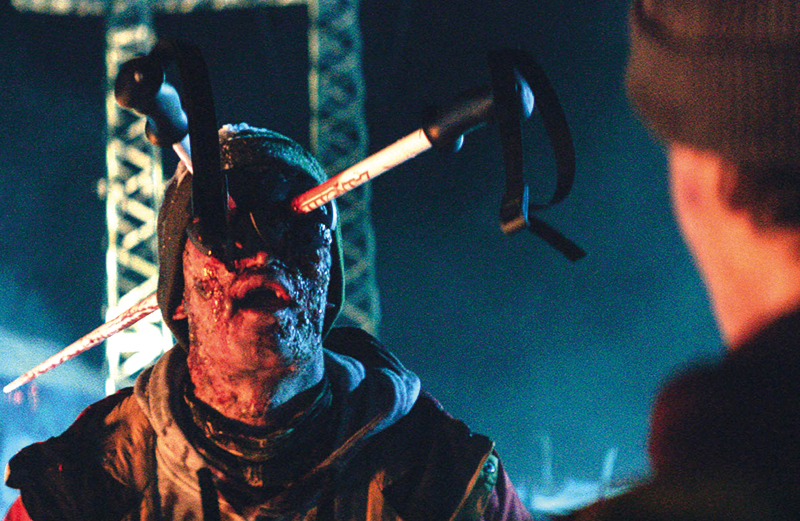
Ihr habt beide das Drehbuch selbst geschrieben. Denkt man in solchen Genres an die eigenen Ängste oder fragt man sich, was für das Publikum spannend ist?
MR: Das ist eine Kombination von eigenen Angstvorstellungen und dem, was man glaubt, was die ZuschauerInnen ängstigt. Ich schaffe ein Setting, überlege mir Figuren und versuche dann das Maximum an Thrill herauszuholen. Manchmal mache ich es auch noch ein wenig drastischer, solange die Geschichte noch funktioniert – bei Mein Fleisch und Blut war es außerdem immer wichtig, dass die Geschichte speziell für das österreichische Publikum nachvollziehbar ist. Denn es ist ein österreichischer Film, der seine Herkunft auch nicht verhehlen will. Es ist eine Geschichte, die sehr alltäglich beginnt, in einer Umgebung, die jeder kennt und die dann sukzessive immer heftiger wird. Die Frage ist dann, gehen die ZuschauerInnen mit? Ist ein Sprung dabei in der Story, der dann einfach zu weit geht? Letztendlich wollen die ZuschauerInnen ja maximale Spannung erleben, deswegen gehen sie in einen Thriller und daher ist da die Bereitschaft relativ hoch.
DH: Attack of the Lederhosenzombies ist in Bezug auf die Geschichte ein wenig ein Sonderfall, denn wir mussten uns sehr nach den technischen Möglichkeiten richten. Wir hatten viele Ideen zu noch ausgefeilteren Actionszenen, die jedoch finanziell nicht machbar oder technisch zu aufwendig waren. Der Fokus liegt außerdem auf dem Exploitation-Element und nicht auf der Zeichnung der Figuren. Auf einschlägigen Festivals haben wir zum Beispiel viel Anerkennung für die variantenreichen Todesarten bekommen. Für mich ist es generell sehr wichtig, Filme zu machen, die ich selbst gerne sehen würde und die mir Freude bereiten. Wenn ich das Drehbuch im Nachhinein analysiere, dann merke ich, wo ich am meisten Spaß beim Schreiben hatte. Das waren die „schrillen“ Momente im Film.
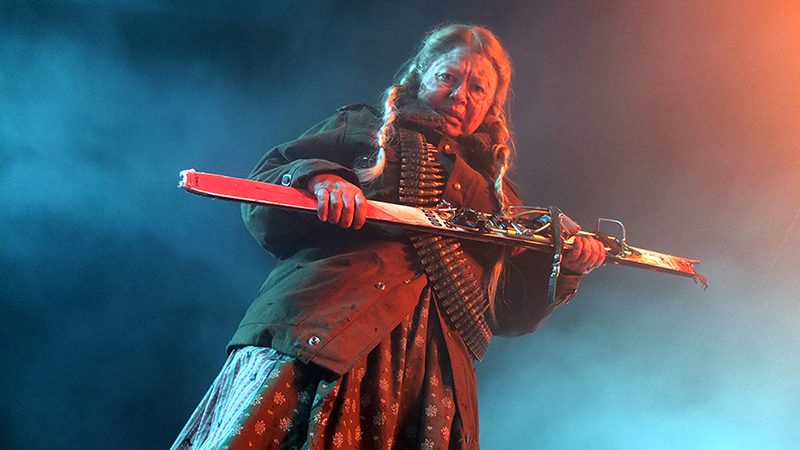
Wie wichtig ist es euch, Botschaften in eure Filme zu packen?
DH: Ich finde, das ist ein sehr wichtiger Bestandteil − gerade bei Genrefilmen. Egal, ob dies nun auf einem sehr hohen Niveau passiert oder nicht. Aber es gibt kaum einen guten Genrefilm, der nicht etwas Relevantes verhandelt. Das Interessante an Genrefilmen oder High Concept-Filmen generell ist ja, dass Botschaften sehr direkt übermittelt werden. Ein konkretes Beispiel ist etwa Jurassic Park (USA 1993, R: Steven Spielberg, Anm. d. Red), der aus meiner Sicht kein Film über Saurier ist, sondern ein Film über zwei Menschen, von denen die Frau eine Familie gründen will, aber der Mann noch nicht so weit ist. Es ist ein Film darüber, Elternpflicht zu übernehmen. In jedem guten Genre- oder Horrorfilm geht es nie nur um das Monster, das Monster steht immer für etwas. Deswegen ist die Botschaft im Film auch für mich sehr wichtig und gerade im Genrefilm.
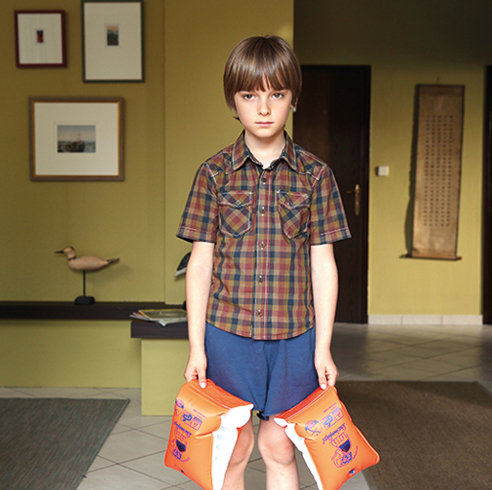
MR: Bei mir ist die Familie, die von allen Seiten beleuchtet wird, ein großes Thema. Die Sehnsucht nach der perfekten Familie und gleichzeitig deren Unmöglichkeit. Jede Figur im Film begeht Fehler, ihre Motivation ist aber immer verständlich. In einer Familie sind einfach Menschen zusammen, die Fehler machen, trotzdem muss man einen Weg finden. Eine interessante Frage ist auch, was passiert, wenn die Eltern versagen, was macht das mit dem Nachwuchs, wie entwickelt er sich, wenn die Eltern keine Liebe und Geborgenheit an ihre Kinder weitergeben? Mein Fleisch und Blut ist für mich eigentlich ein „Familienfilm“ und behandelt damit ein Thema, das jeden betrifft.
Welche filmischen Vorbilder habt ihr?
DH: Ich glaube man sieht es ganz gut, dass ich mit dem Film sehr in den 1980er-Jahren verhaftet war. Die Zombies sind eigentlich 80er-Jahre Zombies in ihrem Verhalten, denn Zombies sind generell im Laufe der Zeit immer schneller und auch intelligenter geworden – es gab eine Art Zombie-Evolution. Aber auch was die Ästhetik des Films betrifft, waren die Vorbilder unter anderem John Carpenter und Peter Jackson. Es gibt auch neuere Filme, die mich beeinflusst haben, etwa die von Edgar Wright – und hier wiederum diejenigen Filme, die sich ebenfalls an den 1980er Jahren orientieren. Meiner Meinung und meinem persönlichen Geschmack nach, sind die 1980er, was Filme betrifft, optisch die schönste Zeit – lichttechnisch sehr opulent und mit starken Kontrasten.
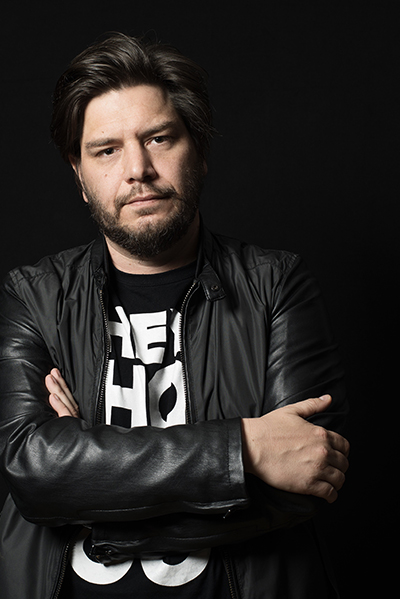
MR: Ich würde sagen, alles, was dieses Genre betrifft – ich habe mir jetzt keine speziellen Filmemacher genauer angesehen oder mich inspirieren lassen. Wenn man Namen wie Alfred Hitchcock nennt, klingt das immer ein wenig größenwahnsinnig, aber natürlich war er einer der Urväter des Thrillers und hat die Mechaniken super verstanden – als Filmemacher hat man diese so in sich, dass man sie dann mehr oder weniger unbewusst auch umsetzt.
Auch ich habe beim Sichten des Films an Alfred Hitchcock gedacht …
MR: Es gibt schon Anspielungen an Hitchcock-Filme und andere Thriller. Auch ganz dezenten Humor, der dieses Genre ein wenig zuspitzt.
DH: Das Schöne am Subgenre Zombie-Komödie ist, dass es die Tradition gibt, sich gegenseitig zu referenzieren. Die Lederhosenzombies zitieren einige Filme und Genretrends, die Fans dann erkennen, was ihnen großen Spaß macht. Wir haben auch sehr viel, sehr direkt zitiert – eine Tanzszene ist zum Beispiel genau gleich geschnitten und hat dieselbe Bildkomposition wie eine sehr berühmte Tanzszene in The Sound of Music (USA 1965, R: Robert Wise, Anm. d. Red.).
MR: Ich arbeite gerade an einer Science Fiction-Geschichte und es ist sehr angenehm, wenn man sich in so einem Genre durch die ganzen Referenzen bewegt. Man freut sich darüber, man weiß, dass es eine Community gibt, die die Anspielungen und Witze versteht – es gibt mehr spezielle Codes als in anderen Filmen. Man kann hier zitieren und weiß, dass es auch funktionieren wird, weil es ja in dem Film, den man geliebt und zitiert hat, auch funktioniert hat.
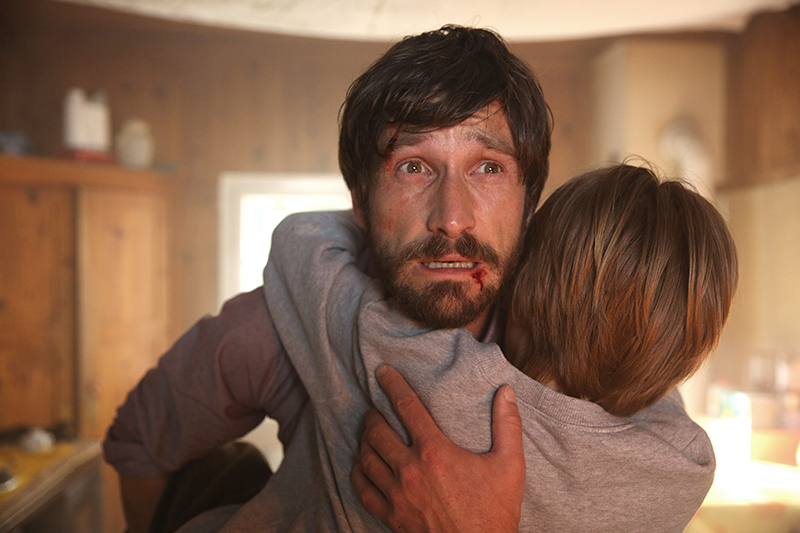
Das heißt, dein nächstes Projekt wird wieder ein Genrefilm, ein Science Fiction-Film, sein?
MR: Wenn man in diesem Genre international bestehen will, dann braucht man ein Budgetvolumen, das man in Österreich nur schwer bekommen kann. Deswegen arbeite ich neben dem SciFi-Projekt auch an etwas komplett anderem, das leichter zu verwirklichen ist. Aber ich würde sehr gerne einen Science Fiction-Film machen – in die Richtung des Films Super 8 (USA 2011, R: J.J. Abrams, Anm. d. Red.) – um eine Gruppe junger Erwachsener, eine Mischung aus Coming of Age, schwarzem Humor, Love Interest und einem Geheimnis, das nicht von dieser Welt ist. Ich schreibe gerade an einem Treatment und die Arbeit daran macht großen Spaß. Die Idee dazu hatte ich schon vor einiger Zeit, interessanterweise lässt sich meiner Ansicht nach ein Trend in diese Richtung ausmachen. Ich glaube, einige FilmemacherInnen würden gerne die Art von Filmen machen, die sie in den 1980ern geliebt und geprägt haben wie Close Encounters of the Third Kind,
E.T., Die Goonies oder Zurück in die Zukunft.
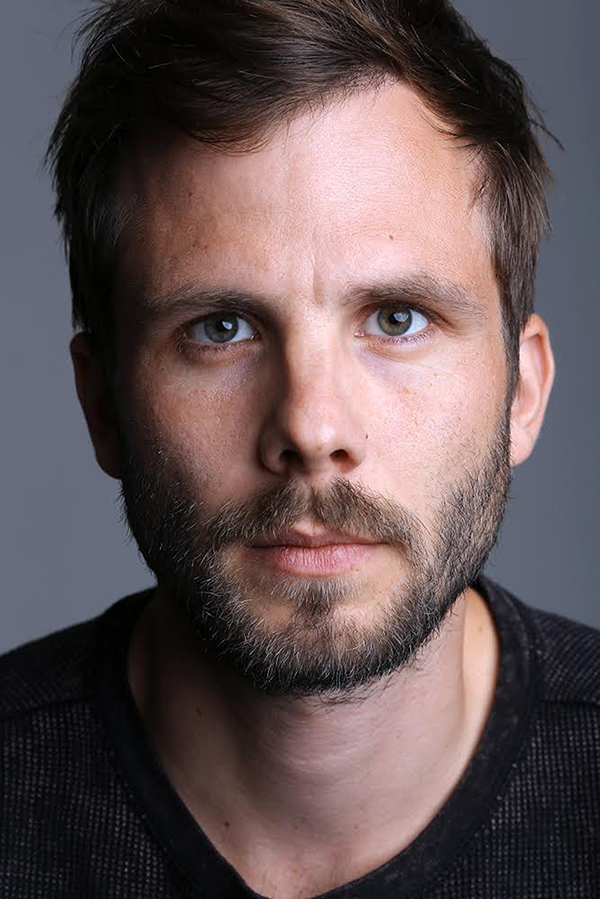
Und was planst du als nächstes, Dominik?
DH: Ich arbeite gerade konkret an zwei Filmen, von denen der eine hoffentlich nächstes Jahr gedreht wird und eine Kombination aus Coming of Age- und Horrorfilm ist und während einer Maturareise spielt. Gerade in Österreich sind organisierte Maturareisen sehr beliebt – ich war kürzlich in so einem Ressort, wo gleichzeitig 3.000 bis 4.000 Jugendliche ihre bestandene Matura feiern. Dort gibt es tägliches Programm, DJs, Alkohol − ein geniales Setting für einen Film, da alle gerade die Schule abgeschlossen haben, feiern wollen, bevor der Ernst des Lebens beginnt. Mein zweites Projekt ist mit einer Berliner Produktionsfirma, die mich wegen Attack of the Lederhosenzombies angefragt hat – das soll ein Horrorfilm in der Arktis werden. In beiden Fällen bin ich Regisseur, aber ich schreibe im Moment auch sehr viel und will mich als Drehbuchautor – auch außerhalb des Genre-Kinos – verbessern.

